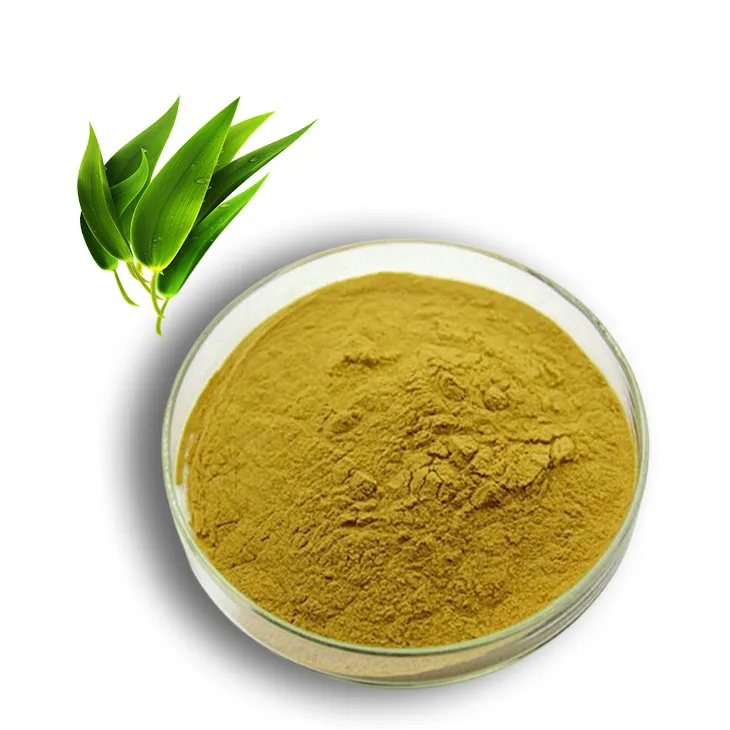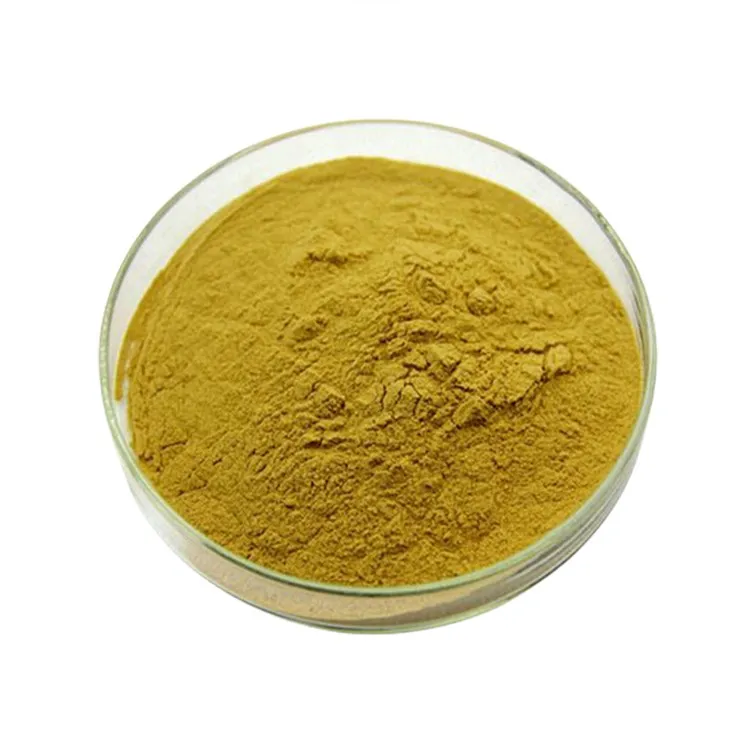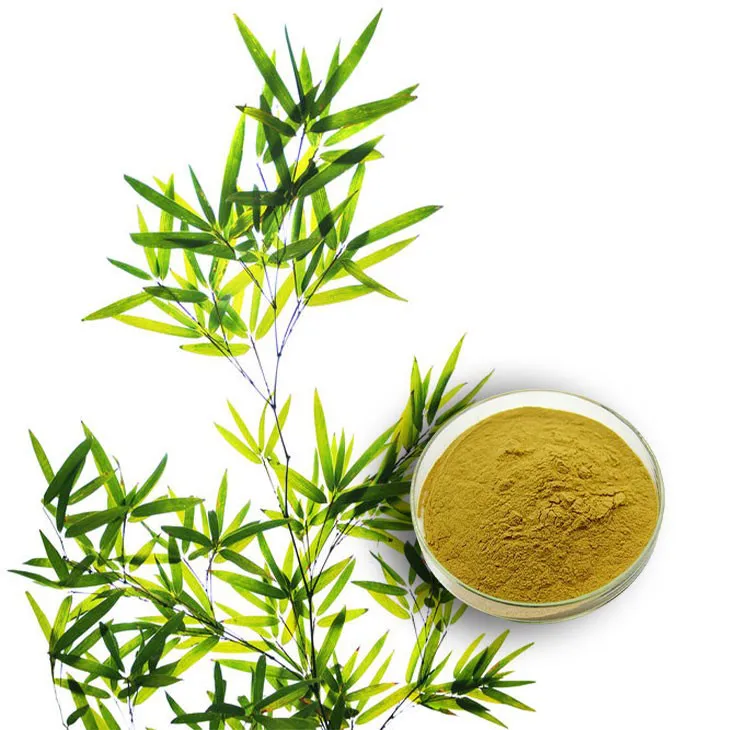- 0086-571-85302990
- sales@greenskybio.com
Optimal Bioavailability of Bamboo Leaf Extracts.
2024-11-28

1. Introduction
Bamboo, a plant with a rich history and diverse applications, has been increasingly studied for the potential health benefits of its leaf extract. Bioavailability is a crucial factor in determining the effectiveness of Bamboo Leaf extract in various applications, especially in the field of nutraceuticals and pharmaceuticals. Understanding the factors that influence bioavailability is essential for maximizing the potential of Bamboo Leaf extract.

2. The Significance of Bioavailability
2.1 Definition and Concept
Bioavailability refers to the fraction of an administered substance that reaches the systemic circulation and is available at the site of action. In the case of Bamboo Leaf extract, it determines how much of the active compounds present in the extract can be utilized by the body. A high bioavailability ensures that a sufficient amount of the beneficial components, such as flavonoids and phenolic acids, can exert their physiological effects.
2.2 Impact on Health Benefits
If the bioavailability of bamboo leaf extract is low, the potential health - promoting effects may not be fully realized. For example, antioxidant properties, which are attributed to the presence of certain flavonoids in bamboo leaves, may not be effectively manifested if these compounds are not adequately absorbed. This could limit the extract's ability to combat oxidative stress, reduce inflammation, and potentially prevent chronic diseases.
3. Processing Techniques and Bioavailability
3.1 Traditional Processing Methods
- Drying: Traditional drying methods, such as sun - drying or air - drying, can have an impact on bioavailability. During drying, some volatile compounds may be lost, which could potentially affect the overall bioactivity of the extract. However, proper drying is necessary to preserve the extract and prevent microbial growth. - Crushing and Grinding: These processes break down the bamboo leaves into smaller particles, which can increase the surface area available for extraction. A larger surface area can enhance the extraction efficiency of active compounds, thereby potentially improving bioavailability.
3.2 Modern Processing Technologies
- Supercritical Fluid Extraction (SFE): SFE using carbon dioxide as a solvent has several advantages. It can operate at relatively low temperatures, which helps to preserve the thermolabile compounds in bamboo leaf extract. This method can also produce a more pure extract with a higher concentration of active compounds, potentially leading to better bioavailability. - Microwave - Assisted Extraction (MAE): MAE can significantly reduce the extraction time compared to traditional methods. By using microwave energy, the cell walls of the bamboo leaves are disrupted more efficiently, facilitating the release of active compounds. This rapid extraction process may help to preserve the integrity of the compounds and improve their bioavailability.
4. Solubility and Bioavailability
4.1 Solubility Characteristics of Bamboo Leaf Extract
Bamboo leaf extract contains a complex mixture of compounds with different solubility properties. Flavonoids, for example, may have limited solubility in water, which can pose a challenge for their absorption in the body. On the other hand, some phenolic acids may be more soluble in aqueous solutions. Understanding the solubility of different components in the extract is crucial for formulating strategies to improve bioavailability.
4.2 Strategies to Enhance Solubility
- Use of Solubilizing Agents: Incorporating solubilizing agents such as cyclodextrins can improve the solubility of poorly soluble compounds in bamboo leaf extract. Cyclodextrins can form inclusion complexes with the active compounds, increasing their solubility in water and potentially enhancing their bioavailability. - Nano - Formulation: Nanotechnology offers a promising approach to improve solubility. By reducing the particle size of the extract to the nanoscale, the surface area to volume ratio is increased. This can enhance the solubility and dissolution rate of the active compounds, leading to improved bioavailability.
5. Biological Mechanisms Affecting Bioavailability
5.1 Absorption in the Gastrointestinal Tract
- The absorption of bamboo leaf extract in the gastrointestinal (GI) tract is a complex process. The epithelial cells lining the GI tract play a crucial role in the uptake of the active compounds. Some compounds may be absorbed via passive diffusion, while others may require specific transporters. For example, flavonoids may interact with certain membrane transporters, such as glucose transporters, to enter the cells. - The pH environment in the GI tract also affects absorption. The acidic environment in the stomach may cause some compounds to be protonated, which can influence their solubility and subsequent absorption in the small intestine.
5.2 Metabolism and Biotransformation
- Once absorbed, the active compounds in bamboo leaf extract may undergo metabolism in the liver and other tissues. Metabolism can either enhance or reduce the bioactivity of the compounds. For instance, some flavonoids may be metabolized into more active or less active forms. - Enzymatic biotransformation processes, such as cytochrome P450 - mediated reactions, can modify the chemical structure of the compounds. Understanding these metabolic pathways is important for predicting the bioavailability and bioactivity of bamboo leaf extract.6. Conclusion
In conclusion, achieving optimal bioavailability of bamboo leaf extract is a multi - faceted challenge. It requires a comprehensive understanding of processing techniques, solubility characteristics, and biological mechanisms. By carefully considering these factors, it is possible to develop strategies to enhance the bioavailability of bamboo leaf extract, thereby maximizing its potential health benefits. Future research should focus on further exploring these aspects and developing novel approaches to improve the utilization of bamboo leaf extract in various applications.
FAQ:
1. What is bioavailability?
Bioavailability refers to the proportion of a drug or other substance that enters the circulation when introduced into the body and so is able to have an active effect. In the case of bamboo leaf extract, it is about how much of the active components in the extract can be absorbed and utilized by the body.
2. Why is bioavailability important for bamboo leaf extract?
High bioavailability of bamboo leaf extract is crucial because it determines the effectiveness of the extract in exerting its potential health benefits. If the bioavailability is low, even if the extract contains valuable components, they may not be able to reach the target sites in the body in sufficient amounts to produce the desired physiological effects.
3. How do processing techniques affect the bioavailability of bamboo leaf extract?
Different processing techniques can have a significant impact. For example, extraction methods can influence the release of active compounds from the bamboo leaves. Techniques that are too harsh may damage the active components, while gentler and more targeted extraction methods can preserve and enhance their availability. Also, processes like drying and milling can affect the physical properties of the extract, which in turn can influence its solubility and absorption in the body, thus affecting bioavailability.
4. What role does solubility play in the bioavailability of bamboo leaf extract?
Solubility is a key factor. If the bamboo leaf extract has low solubility in the body's fluids (such as gastric juices or intestinal fluids), it will be difficult for the active components to dissolve and be absorbed. Improving solubility, for example, through formulation with appropriate carriers or by modifying the chemical structure of the active compounds in a way that enhances solubility, can increase the bioavailability of the extract.
5. Can you explain some of the biological mechanisms related to the bioavailability of bamboo leaf extract?
Once the bamboo leaf extract is ingested, it has to pass through various biological barriers in the body. For example, in the gastrointestinal tract, it needs to be absorbed across the intestinal epithelium. Some biological mechanisms that can affect this include active transport systems that can help carry certain components of the extract into the cells, and the interaction of the extract components with the gut microbiota. The gut microbiota can metabolize some of the compounds in the extract, which may either enhance or reduce their bioavailability depending on the nature of the metabolites produced.
Related literature
- Bioavailability Enhancement of Phytochemicals: A Review of Techniques and Their Efficacy for Bamboo Leaf Extracts"
- "The Influence of Solubility on the Bioavailability of Bamboo Leaf Extract Components: A Comprehensive Study"
- "Processing Techniques and Their Impact on the Bioavailability of Bamboo Leaf Extract: Current Research"
- ▶ Hesperidin
- ▶ Citrus Bioflavonoids
- ▶ Plant Extract
- ▶ lycopene
- ▶ Diosmin
- ▶ Grape seed extract
- ▶ Sea buckthorn Juice Powder
- ▶ Fruit Juice Powder
- ▶ Hops Extract
- ▶ Artichoke Extract
- ▶ Mushroom extract
- ▶ Astaxanthin
- ▶ Green Tea Extract
- ▶ Curcumin
- ▶ Horse Chestnut Extract
- ▶ Other Product
- ▶ Boswellia Serrata Extract
- ▶ Resveratrol
- ▶ Marigold Extract
- ▶ Grape Leaf Extract
- ▶ New Product
- ▶ Aminolevulinic acid
- ▶ Cranberry Extract
- ▶ Red Yeast Rice
- ▶ Red Wine Extract
-
Ginseng Root Extract
2024-11-28
-
Citrus bioflavonoids
2024-11-28
-
Curcuma Longa Extract
2024-11-28
-
Acerola Juice Powder
2024-11-28
-
Lemon Balm Extract
2024-11-28
-
Tamarind extract powder
2024-11-28
-
Hawthorn powder
2024-11-28
-
Chia Seed Powder
2024-11-28
-
Scutellaria Extract
2024-11-28
-
Citrus Aurantii Extract
2024-11-28





















